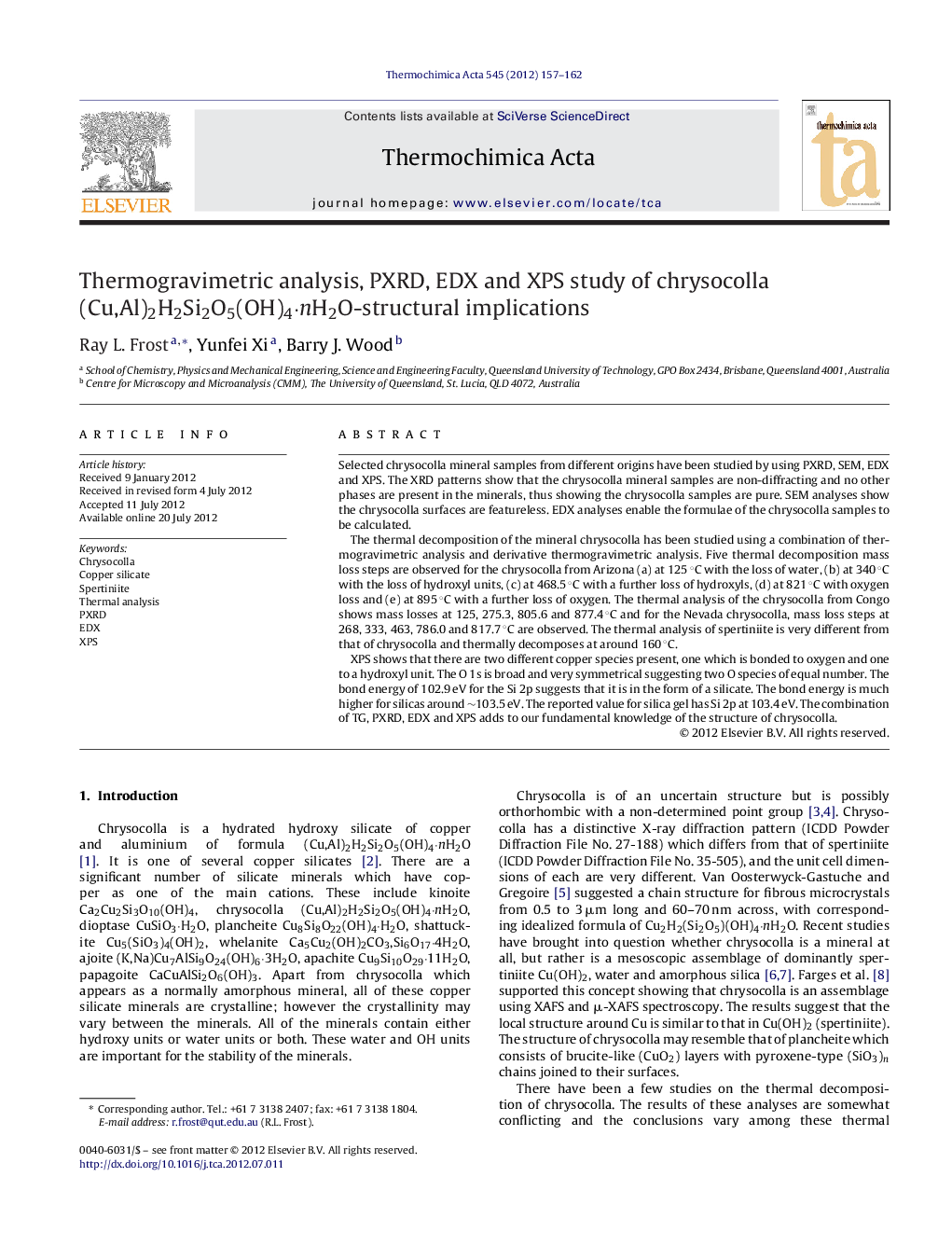| Article ID | Journal | Published Year | Pages | File Type |
|---|---|---|---|---|
| 674050 | Thermochimica Acta | 2012 | 6 Pages |
Selected chrysocolla mineral samples from different origins have been studied by using PXRD, SEM, EDX and XPS. The XRD patterns show that the chrysocolla mineral samples are non-diffracting and no other phases are present in the minerals, thus showing the chrysocolla samples are pure. SEM analyses show the chrysocolla surfaces are featureless. EDX analyses enable the formulae of the chrysocolla samples to be calculated.The thermal decomposition of the mineral chrysocolla has been studied using a combination of thermogravimetric analysis and derivative thermogravimetric analysis. Five thermal decomposition mass loss steps are observed for the chrysocolla from Arizona (a) at 125 °C with the loss of water, (b) at 340 °C with the loss of hydroxyl units, (c) at 468.5 °C with a further loss of hydroxyls, (d) at 821 °C with oxygen loss and (e) at 895 °C with a further loss of oxygen. The thermal analysis of the chrysocolla from Congo shows mass losses at 125, 275.3, 805.6 and 877.4 °C and for the Nevada chrysocolla, mass loss steps at 268, 333, 463, 786.0 and 817.7 °C are observed. The thermal analysis of spertiniite is very different from that of chrysocolla and thermally decomposes at around 160 °C.XPS shows that there are two different copper species present, one which is bonded to oxygen and one to a hydroxyl unit. The O 1s is broad and very symmetrical suggesting two O species of equal number. The bond energy of 102.9 eV for the Si 2p suggests that it is in the form of a silicate. The bond energy is much higher for silicas around ∼103.5 eV. The reported value for silica gel has Si 2p at 103.4 eV. The combination of TG, PXRD, EDX and XPS adds to our fundamental knowledge of the structure of chrysocolla.
► We have undertaken a TG_XPS study of the mineral chrysocolla. ► The chemical bonding of Cu, O and Si has been determined. ► It is concluded that chrysocolla is a mineral in its own right. ► It is not a colloidal mixture of spertiniite and amorphous silica.
